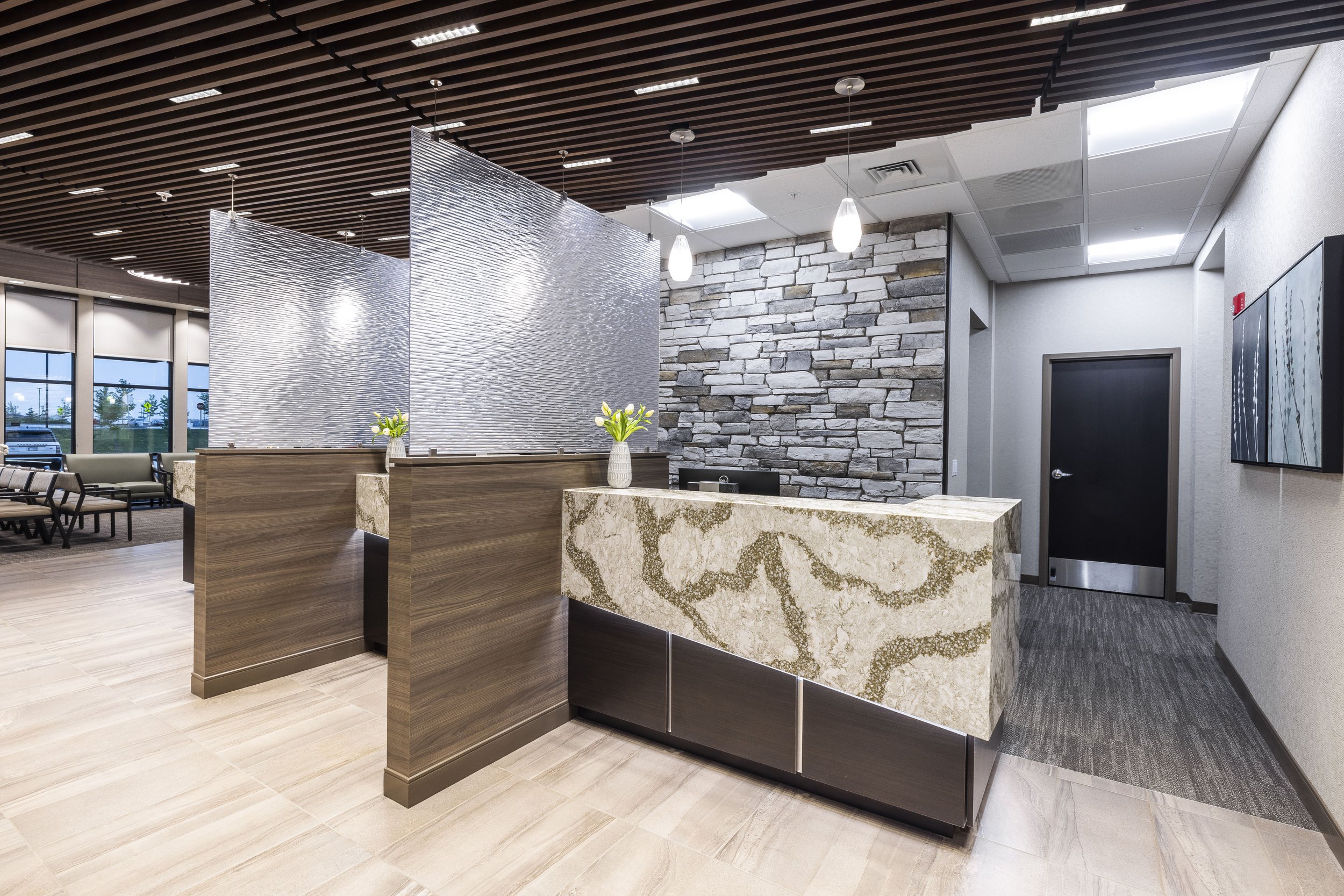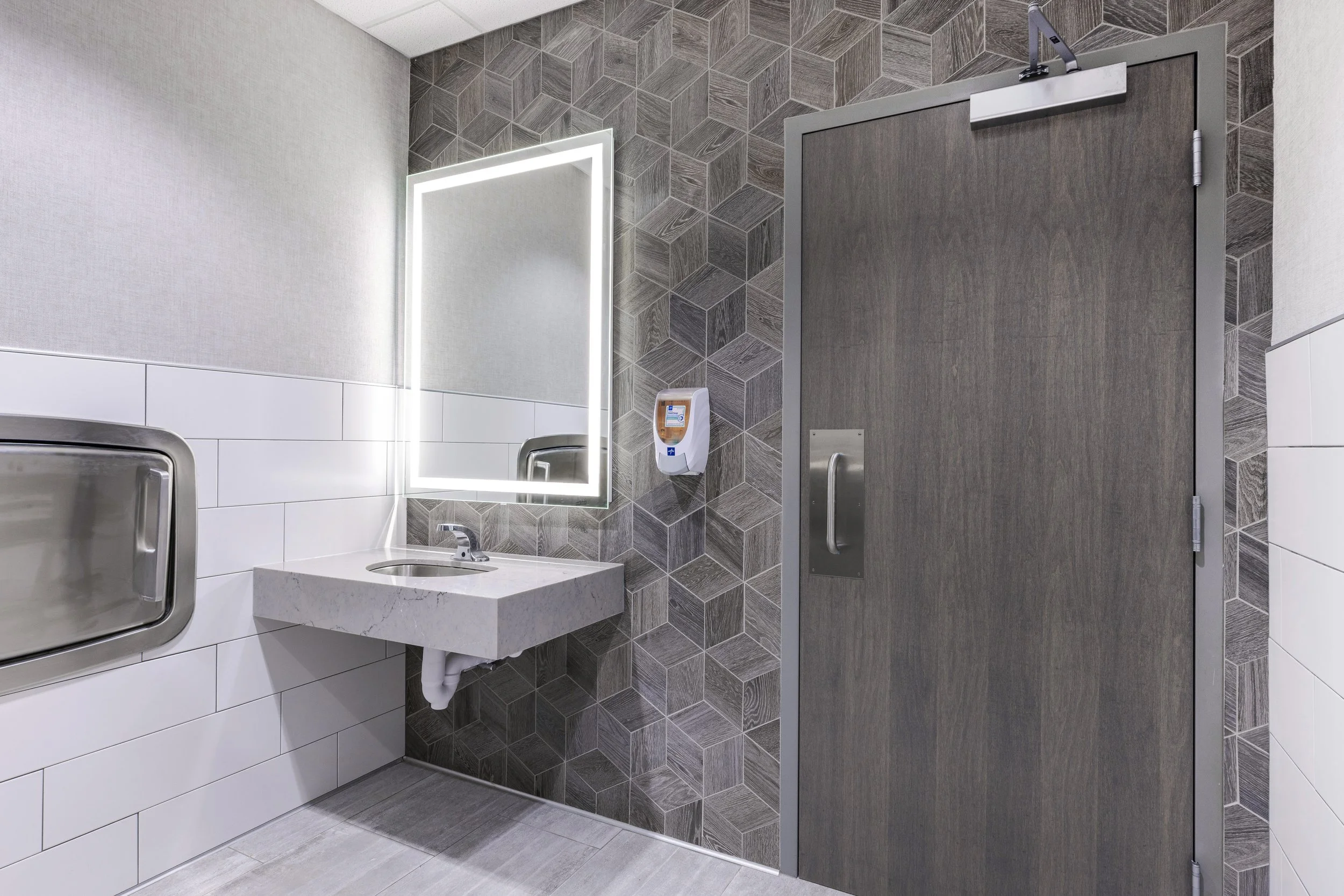The Impact of Patterns & Textures Within a Design
Entered By: Grace Hess
August 2025
When the two topics pattern and texture come to mind for a design, some individuals may think of these concepts as overwhelming, possibly nervewracking, or just simply insignificant. Contrary to these opinions, designers often use these elements not only to elevate the aesthetic of a space, but to enhance and improve the overall experience within the space as well. These elements are sometimes overlooked, but they are just as significant as color, space, and any other detail incorporated within a room or area.
Not only can you physically feel different textures within a space, but textures can alter the overall experience and emotion for individuals. The sensory experience of a rough exterior brick compared to a soft, plush cushion on a chair will alter the way we as humans perceive a space emotionally. Though texture itself can often be misunderstood as just something you can feel physically, designers use texture for several different reasons. Not only do textures allow a tactile experience for a person, but they also combine with the visual and emotional aspect an individual takes in. Texture allows depth, personal style, and visual interest to be incorporated into a design.
Layering, and using a variety of textures creates depth, and even increases visual interest in a design. With knowledge on how color, pattern, and texture can enhance a space, these elements can work together to create an aesthetic contrast and balance. Additionally, texture can add a comforting feeling, and functionality for a specific space. For example, a smooth, comfortable waiting chair in an office building adheres to both comfortability and functionality for that area, making it more visually appealing and more comfortable for the individual sitting and waiting in that room.
Patterns and textures oftentimes go hand in hand with one another. While textures refer mostly to the surface of materials, patterns are strictly visual elements that repeat. Patterns are essential for creating harmony and rhythm in a design. Similar to textures, the use of patterns is extremely significant. The strategic use of patterns can transform a design whether the pattern is subtle and slight, or bright and bold for creating contrast. Patterns can evoke feelings within a space for individuals. For example, geometric patterns can create an organized and modern feeling, while abstract patterns add a touch of personality and creativity within a space.
Balance within both textures and patterns is essential. Using these two elements correctly are extremely important due to the feeling of the area they are placed in. While both patterns and textures can add personality and creativity, too many contrasting patterns and textures can become overwhelming and chaotic. Paying clear attention to the scale of the patterns, placement of the patterns, and the functionality of the room the patterns are involved in are just a few ways to ensure the correct use of patterns.
Overall, the use of these two elements are extremely significant within a space. Both add dimension, balance, and personality within a design. The pairing of the two not only add to the visual appearance of the space, but also enhance the emotional feeling of the overall design for each individual who walks in.
Text Sources:
https://www.almadeluce.com/blog/the-influence-of-texture-in-interior-design/
https://squarefeetstory.com/the-role-of-textures-and-patterns-in-interior-design/
Image Sources:
RMK
https://momentumtextilesandwalls.com/collections/sina-pearson
Mountain View Pediatric Dentistry - Great Falls, Montana
Williams Eye Institute - Merrillville, Indiana
Orthopaedic Surgery Center - Edgewood, Kentucky





